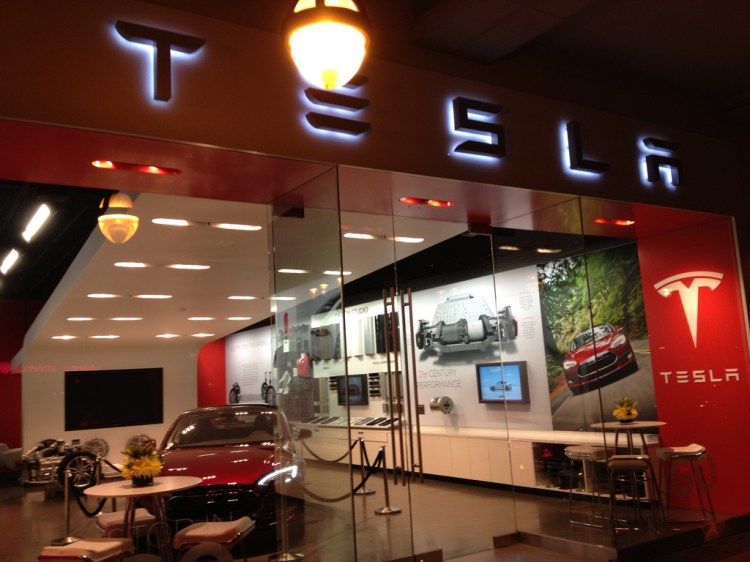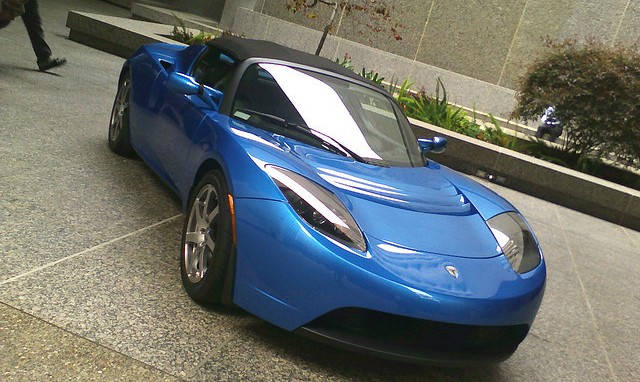Electric-car maker Tesla Motors has done many remarkable things in its short decade of existence–including a few things that the auto industry viewed as impossible.
But the company has never managed to get a car into volume production on the date it first announced.
That applied to its Roadster, the Model S sedan, and the Model X electric SUV.
Last week, news emerged that the “alpha prototype” for the company’s third-generation product, the 200-mile, $35,000 Model 3 sedan, has not yet been built.
When that car–then dubbed Model E–was first announced, Tesla CEO Elon Musk said it would go into production “by the end of 2016.”
Industry consensus has viewed the Model 3’s earliest possible arrival date as the end of 2017.
But Tesla’s most recent quarterly filing with the U.S. Securities and Exchange Commission includes a note that the company has not yet built any “alpha” prototypes of the Model 3.
The sequence of model development, using Tesla terminology, goes like this: First comes a concept vehicle, which may or may not run.
Then come a small handful of “alpha” vehicles, hand-built at great expense to start the process of finalizing the details of the vehicle’s structure, styling, and powertrain.
Don’t miss: Tesla Model 3, Next Electric Car: Roundup Of What We Know Now (Jun 2013)
Finally, a dozen or more “beta” vehicles are put through rigorous testing.
Still largely hand-built, these vehicles are similar to the final production car, but far from identical–and they will likely be modified with the latest updates numerous times during their life.
In Tesla’s case, here’s how that schedule worked for the Model S:
- Model S design first revealed: March 2009
- Alpha prototype: December 2010
- Beta prototypes: October 2011
- First production car delivered: June 2012
As of March 31, according to coverage of Tesla’s SEC filing in The Wall Street Journal, the Model 3 alpha prototype had not been developed.
That fact came within a discussion of Musk’s compensation in the filing; the CEO will not receive certain performance-based equity grants until the alpha and beta prototypes of the Model 3 are completed and the car goes into production.
Following the Model S timetable, to deliver the first Tesla Model 3 by December 2017–just 30 months hence–Tesla wouldn’t have to have its engineering prototype alpha model running until June 2016.
Vehicle development is being overseen by engineering chief Chris Porritt, previously of Aston Martin.
Avoiding the Osborne Effect
But following that timetable, it might be expected to show a design for the Model 3 this spring–which is unlikely, for several reasons.
First, the company’s main focus today is getting its Model X electric SUV into production and starting to fill the 16,000 orders for which it says it has taken deposits.
Second, releasing a design that lets the public visualize its next product runs the risk of subjecting Tesla to the “Osborne Effect.”
That’s the hit to a company’s sales when demand for current products falls substantially after future products with far better specifications and prices have been announced.
Tesla needs to keep selling its Model S and Model X vehicles to generate the cash to the develop the Model 3.
So it likely won’t say much about the third-generation car until well after those cars are at full production capacity–which Musk says will be a rate of 1,000 cars a week by the end of 2015.
Coverage last summer indicated that Tesla might not reveal the car until sometime next year. In other words, watch for those spy photos.
Gigafactory dependency
There’s another risk factor in the Model 3 launch dates, however. The car itself may be ready to go into production within two years.
But if Tesla’s planned battery plant in Nevada–its first “gigafactory”–isn’t simultaneously on schedule and producing the needed quantities of lithium-ion cells, there will be no energy storage to go into the new model.
Cell fabrication plants are notoriously finicky, and boosting the quality and yield of the electrode materials to economic levels can be challenging.
Tesla’s cell partner, Panasonic, will be providing most of the equipment and expertise for the plant, which will not only make the cell components from raw materials but will also produce completed battery packs.
The cell used for the Model 3 is expected to be a further development of the small-format “commodity” cells designed by Tesla and used in all variants of the Model S to date.
The company hasn’t said much about its gigafactory of late.
A Reno newspaper reported two weeks ago that Tesla had spent just $62 million on the plant thus far, seemingly a low number for a plant under development almost six months that will ultimately cost as much as $5 billion.
Tough ramp-up
It’s worth noting that the Model S production rollout, however, was exceptionally slow and challenging.
In its first year of production, as Musk has said many times, Tesla had to grapple with reducing the amount of labor per car, resplacing suppliers unable to meet required volumes, and many of the other issues a new carmaker would face in launching the first volume car it had ever built.
(The Tesla Roadster was assembled in the U.K. by Lotus.)
Tesla will want to avoid repeating that scenario, although a lower-priced vehicle with a blend of steel and aluminum construction, to be built in much higher volumes, will pose its own fresh set of challenges.
Musk has recently acknowledged that Tesla is unlikely to be producing Model 3s at the full rate of 500,000 cars a year “until 2020” or thereabouts.

Above: Tesla Motors: Located in Silicon Valley, and still working on “hard” problems.
Our take
It’s still too early to tell, of course, whether Tesla will be able to get the Model 3 into production and into buyers’ hands within 32 months.
Its history would indicate that it is unlikely to do so. But Tesla is notoriously secretive, and selective in what it chooses to say about its operations.
We likely won’t hear much at all about the Model 3 this year.
The company’s next big round of vehicle publicity will be when it can tout Model X production cars being delivered to buyers–assuming this happens on schedule in the second half of 2015.
After that, speculation on schedule will kick into high gear if the design for the Tesla Model 3 is released sometime in 2016 as expected.
If that happens, the car will have to be much further along in development than the Model S was at the same point–which is entirely possible.
Add in the gigafactory dependency, however, and it’s clear that launching the Model 3 on time poses some huge challenges for Tesla.
The high-volume Model 3 may be the company’s riskiest project yet. But, to be fair, that’s never stopped Tesla before.
Stay tuned.
This story originally appeared on Green Car Reports. Copyright 2015
VentureBeat's mission is to be a digital town square for technical decision-makers to gain knowledge about transformative enterprise technology and transact. Learn More




